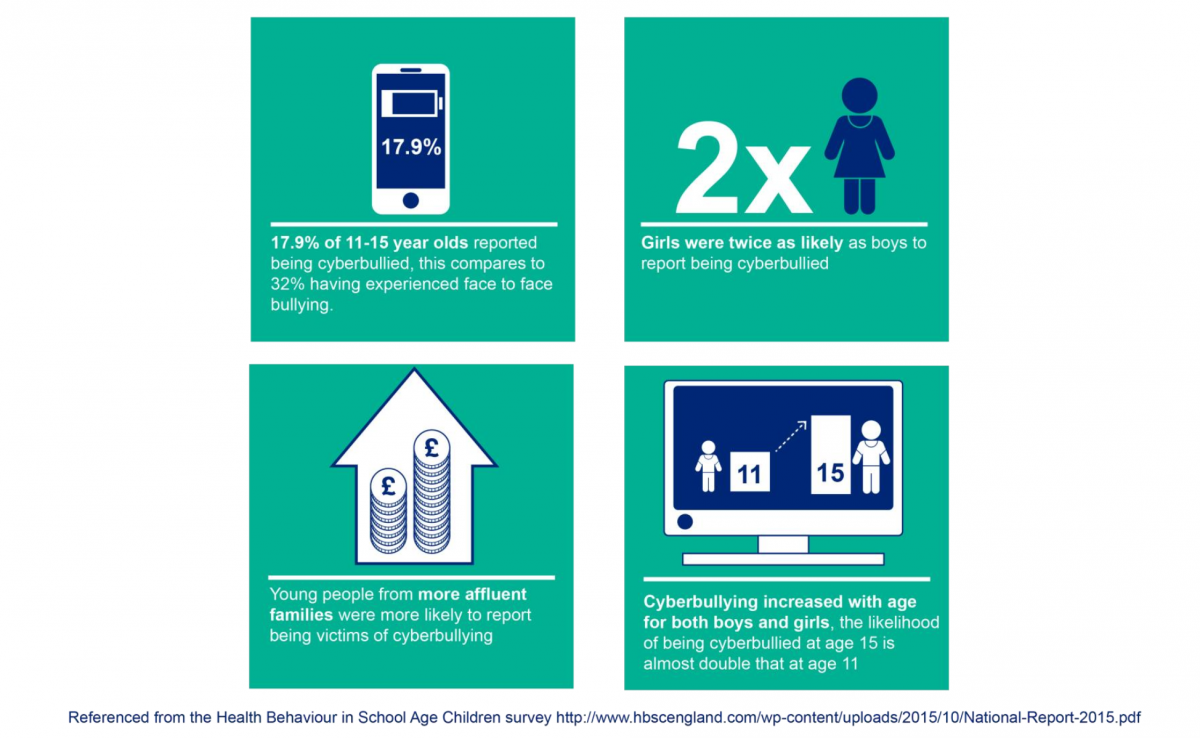There are numerous studies into levels of online bullying that vary significantly. We have listed some below - this list is not exhaustive.
Frequency
In 2017 Public Health England released research from a 2014 consultation with 5,335 young people aged 11-15 years old. They found:
- 17.9% of 11-15 year olds reported being bullied online in the two months prior to being surveyed
- girls were twice as likely as boys to report being bullied online
- online bullying increased with age for both boys and girls; the reported prevalence rates of cyberbullying at age 15 were almost double those for 11 year olds
- online bullying is associated with socio-economic status. Young people from more affluent families were more likely to report being victims of online bullying
- young people who reported positive family communication, especially with a father, were less likely to experience online bullying
- positive perceptions of the school environment were associated with lower levels of online bullying
- online bullying was associated with feelings of safety in young people’s local neighbourhood

Office of National Statistics research 2020
Estimates of the prevalence and nature of online bullying among children using data from the 10-to 15-year-old’s Crime Survey for England and Wales (CSEW).
-
There is no legal definition of bullying, but it is often described as behaviour that hurts someone else, physically or emotionally, and can happen anywhere - at school, at home or online.
-
Around one in five children aged 10 to 15 years in England and Wales (19%) experienced at least one type of online bullying behaviour in the year ending March 2020, equivalent to 764,000 children.
-
More than half (52%) of those children who experienced online bullying behaviours said they would not describe these behaviours as bullying, and one in four (26%) did not report their experiences to anyone.
-
Being called names, sworn at or insulted and having nasty messages about them sent to them were the two most common online bullying behaviour types, experienced by 10% of all children aged 10 to 15 years.
-
Nearly three out of four children (72%) who had experienced an online bullying behaviour experienced at least some of it at school or during school time.
The relationship between 'traditional' bullying and online bullying
Research by Warwick University released in 2017 shows that there is a strong link between 'traditional' face to face bullying compared to cyberbullying. It found:
- Online bullying doesn’t create large numbers of new victims
- Most bullying is face-to-face – with online bullying used as a modern tool to supplement traditional forms
- 29% of UK teenagers reported being bullied – only 1% were victims of online bullying alone
- Bullying intervention strategies should focus on traditional bullying as well as online bullying
